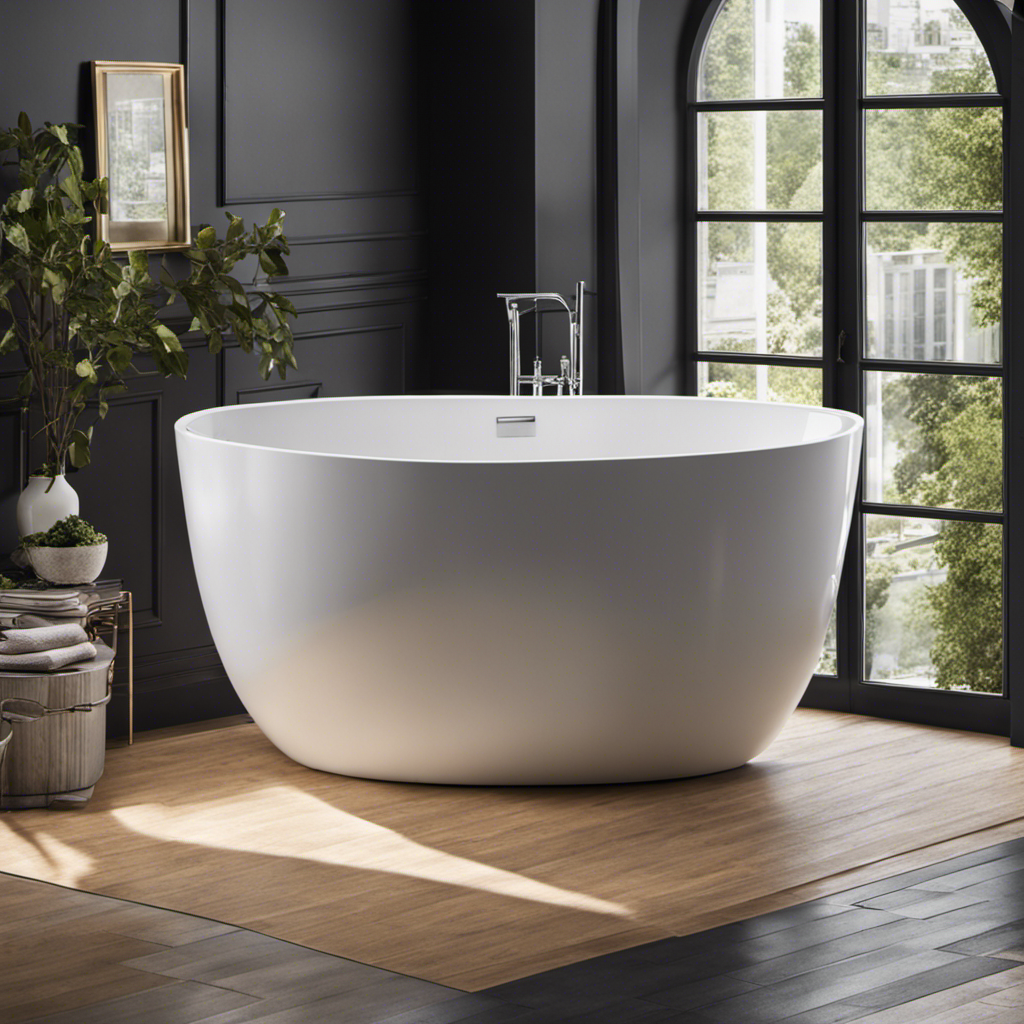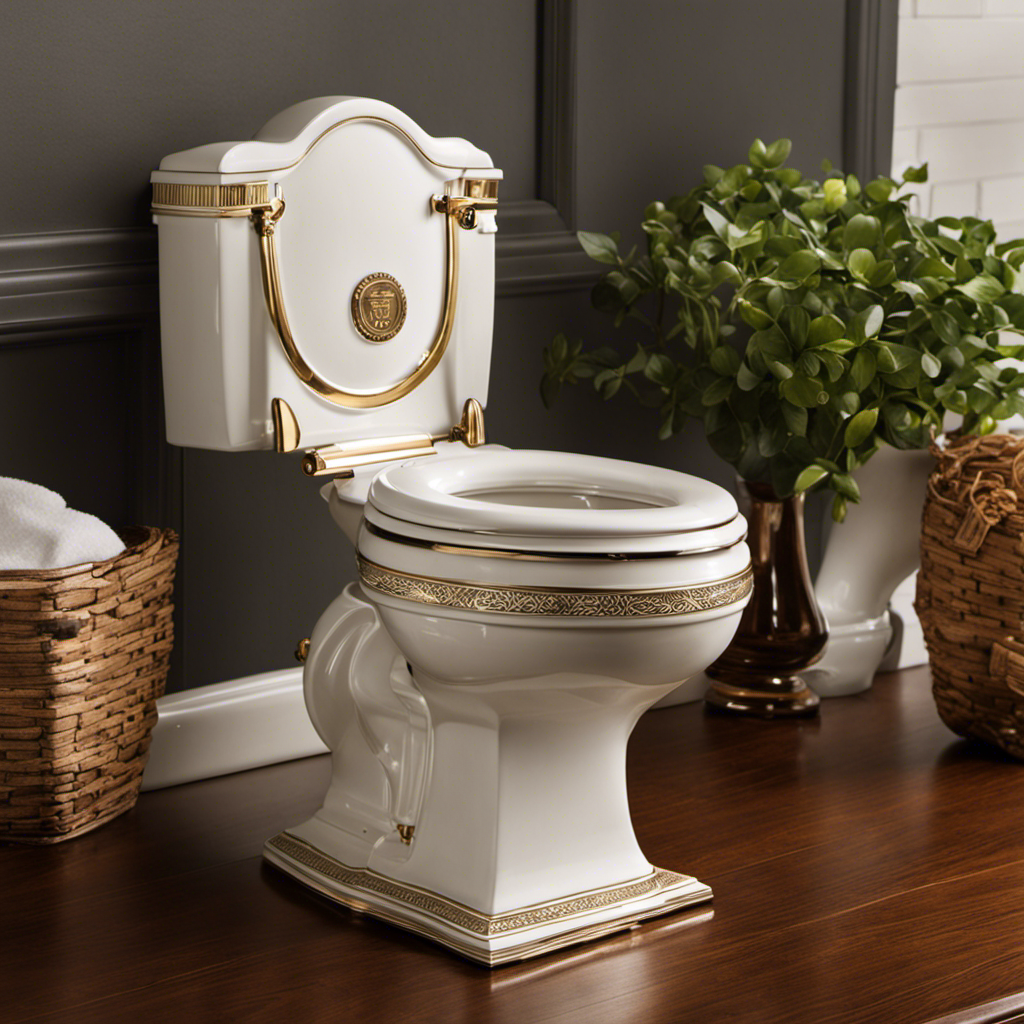Have you ever wondered how much water a constantly flushing toilet uses? Well, we’re here to shed some light on this water-wasting conundrum.
In this article, we will delve into the factors that affect the amount of water wasted by a constantly flushing toilet, the average water consumption, and the consequences on water bills and the environment.
But fear not, dear reader, for we will also provide you with tips to prevent such water wastage. Prepare to master the art of conserving water!
Key Takeaways
- A constantly flushing toilet can waste up to 200 gallons of water per day.
- Factors such as severity of the leak or malfunction, toilet model, water pressure, and frequency of use affect the amount of water wasted by a constantly flushing toilet.
- Dual-flush systems and toilet tank displacement devices can significantly reduce water consumption by a constantly flushing toilet.
- Constantly flushing toilets lead to higher water bills, contribute to water scarcity, and have negative environmental impacts such as increased carbon emissions and pressure on water infrastructure.
Understanding the Water Usage of a Constantly Flushing Toilet
We will now examine the water usage of a constantly flushing toilet.
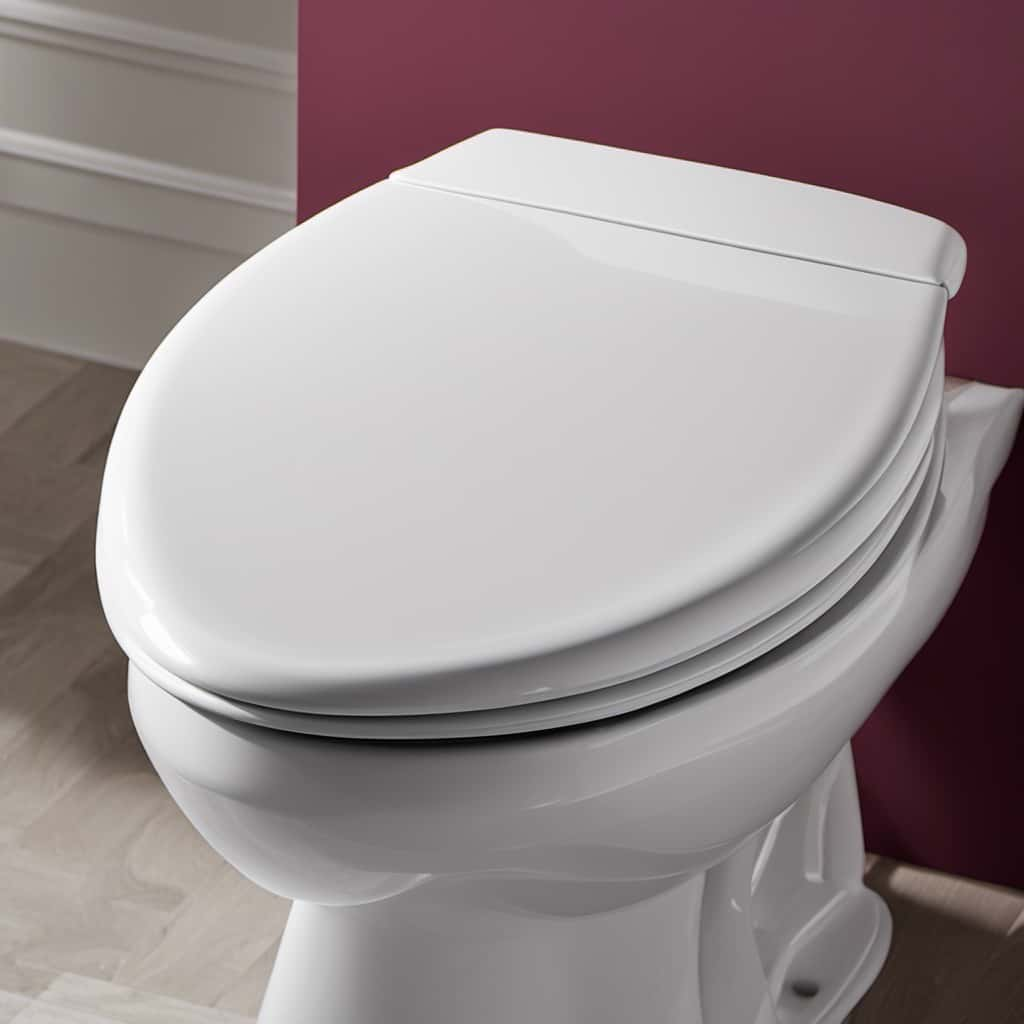
Understanding the water usage of a constantly flushing toilet is crucial in developing effective water saving strategies and addressing the impact on water scarcity.
A constantly flushing toilet, also known as a leaky toilet, can waste a significant amount of water. Each flush releases about 1.6 gallons of water, and if the toilet continuously runs, it can waste up to 200 gallons of water per day. This excessive water usage not only increases water bills but also puts additional strain on our limited water resources.
It’s essential to address these issues by promptly fixing any leaks or malfunctions in toilets and adopting water-saving measures such as installing low-flow toilets or dual-flush systems.
Factors That Affect the Amount of Water Wasted by a Constantly Flushing Toilet
One factor that significantly influences the amount of water wasted by a constantly flushing toilet is the severity of the leak or malfunction.

The following factors also play a crucial role in determining the water usage of a constantly flushing toilet:
- Toilet model: Different toilet models have varying flushing mechanisms, which can impact the amount of water wasted. Older toilets, for example, tend to use more water per flush compared to newer, more efficient models.
- Water pressure: Higher water pressure can lead to increased water usage during each flush. Excessive water pressure can cause the toilet to flush forcefully, resulting in more water being wasted.
- Frequency of use: The more frequently a constantly flushing toilet is used, the more water will be wasted. This is especially true if there’s a leak or malfunction, as it will continuously flush and consume water unnecessarily.
Understanding these factors affecting toilet water usage is crucial for assessing the impact of toilet flushing on water conservation. By identifying and addressing these factors, we can take steps towards reducing water wastage and promoting sustainable water usage.
Average Water Consumption of a Constantly Flushing Toilet
As we delve into the topic of ‘Average Water Consumption of a Constantly Flushing Toilet’, it is important to continue exploring the factors that contribute to the amount of water wasted by such a toilet. One of the key elements to consider is the frequency of flushing. A constantly flushing toilet can consume a significant amount of water, leading to increased water wastage and its impact on water scarcity. Implementing water-saving techniques can help mitigate this issue. By installing a dual-flush system or using a toilet tank displacement device, water consumption can be reduced by up to 50%. Additionally, regular maintenance, such as fixing leaks and adjusting the flush volume, can further minimize water wastage. It is crucial to prioritize water-saving techniques to address the impact of constantly flushing toilets on water scarcity.
| Water-Saving Techniques | Impact on Water Scarcity |
|---|---|
| Dual-flush system | Reduces water consumption by up to 50% |
| Toilet tank displacement device | Minimizes water wastage |
| Regular maintenance | Addresses water scarcity issues |
Consequences of Constantly Flushing Toilets on Water Bills and the Environment
Continuing our exploration of the average water consumption of a constantly flushing toilet, let’s now examine the consequences of this behavior on our water bills and the environment.

Here are three significant impacts of constantly flushing toilets:
- Increased Water Bills: Constantly flushing toilets can lead to excessive water usage, resulting in higher water bills. This wasteful behavior can significantly impact household budgets and put a strain on financial resources.
- Water Scarcity: Excessive water usage from constantly flushing toilets contributes to the depletion of water resources. With water scarcity already a pressing global issue, this behavior exacerbates the problem, making it harder for communities to access clean and safe water.
- Environmental Impact: The excessive water consumption from constantly flushing toilets has a detrimental effect on the environment. It puts unnecessary pressure on water treatment plants, energy consumption, and the overall water infrastructure. Additionally, the energy required to treat and distribute this excessive water usage contributes to carbon emissions and climate change.
Tips for Preventing Water Wastage From a Constantly Flushing Toilet
To minimize water wastage from a constantly flushing toilet, we can regularly check and promptly repair any leaks or malfunctions. Preventing leaks is essential in conserving water. Leaks can occur in the toilet tank or the flapper valve, resulting in continuous flushing. By inspecting these components regularly, we can identify and fix any leaks, preventing unnecessary water usage.
Another effective method to reduce water wastage is by investing in water-saving toilet options. Dual-flush toilets, for example, offer the choice of a full or partial flush, allowing users to conserve water when appropriate. Low-flow toilets are also designed to use less water per flush compared to traditional toilets.
Frequently Asked Questions
Can a Constantly Flushing Toilet Lead to a Higher Risk of Plumbing Issues?
Constantly flushing toilets can lead to a higher risk of plumbing issues. Regular plumbing maintenance is crucial to prevent water wastage and conserve resources. It is important to address these issues promptly for efficient water conservation.
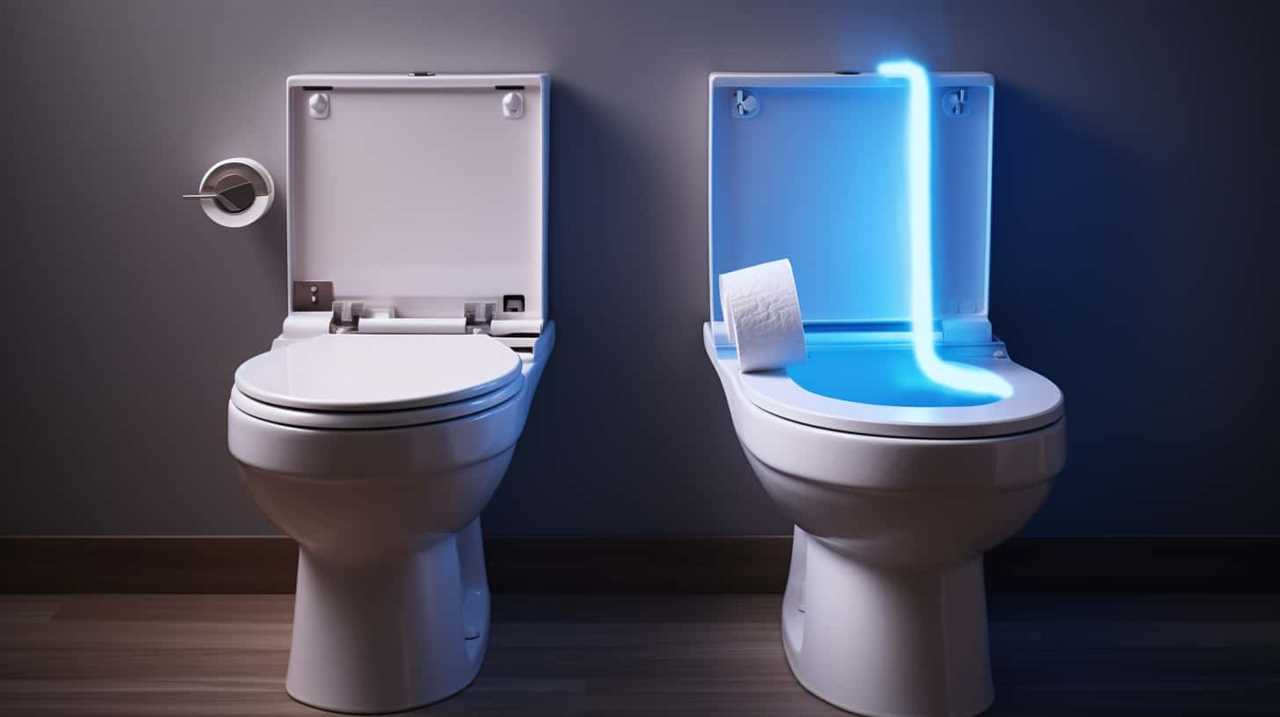
Are There Any Health Risks Associated With Constantly Flushing Toilets?
There are potential health effects associated with constantly flushing toilets, such as increased water consumption. It is important to be mindful of the water usage to minimize any negative impacts on both health and the environment.
Can a Constantly Flushing Toilet Impact the Water Pressure in Other Areas of the House?
A constantly flushing toilet can impact the water pressure in other areas of the house, potentially causing decreased flow. This can lead to higher water bills and hinder water conservation efforts.
Is It Possible to Retrofit an Older Toilet to Reduce Water Wastage?
Retrofitting an older toilet is a cost-effective solution that offers benefits such as reducing water wastage. By making changes to the flushing mechanism, it is possible to decrease the amount of water used per flush.
How Can I Determine if My Toilet Is Constantly Flushing Without My Knowledge?
We can determine if a toilet is constantly flushing by checking for signs such as a continuous sound of running water or a constantly moving water meter. These ways to save water are important for preserving resources and reducing water bills.
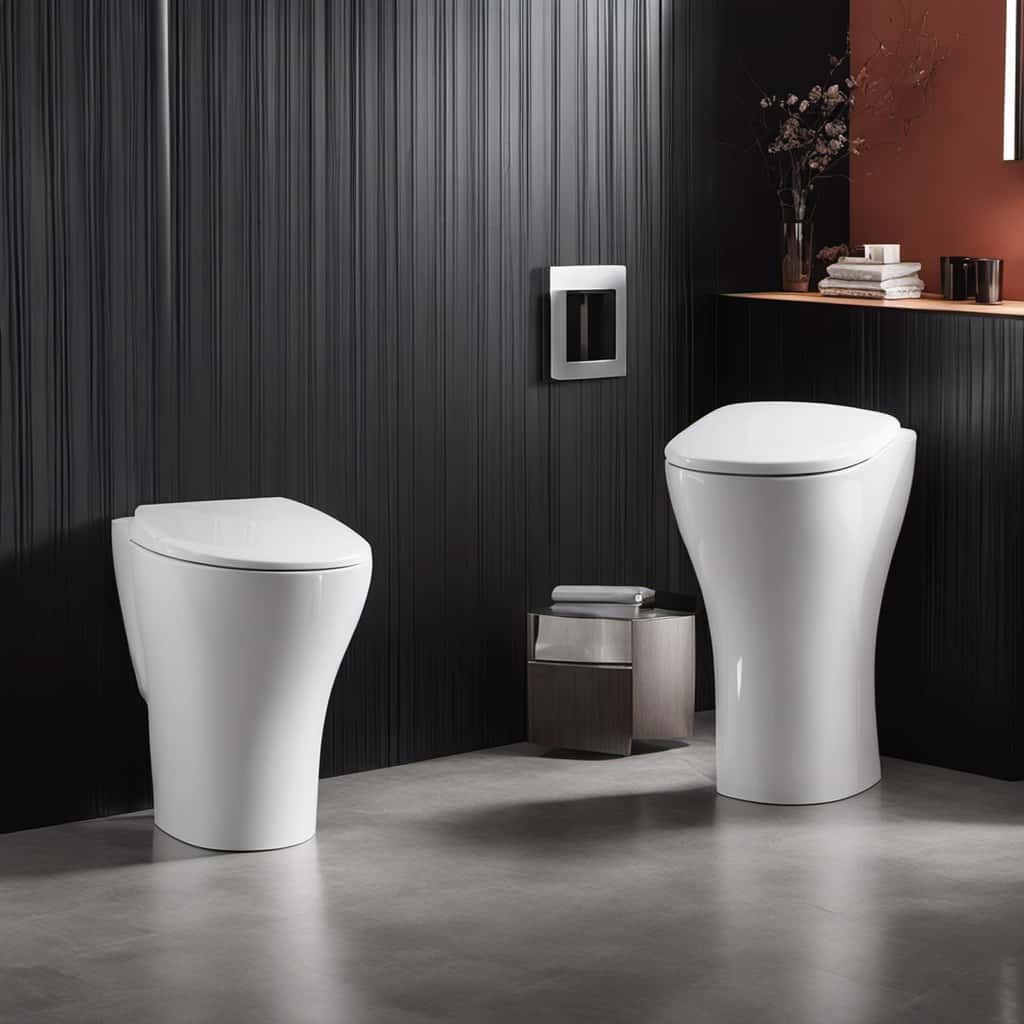
Conclusion
In conclusion, constantly flushing toilets can result in significant water wastage, leading to higher water bills and negative environmental impacts.
By understanding the factors that affect water usage and implementing preventive measures, such as fixing leaks and using water-saving devices, we can reduce water waste and contribute to a more sustainable future.
Let’s make conscious choices to conserve water and protect our planet.

